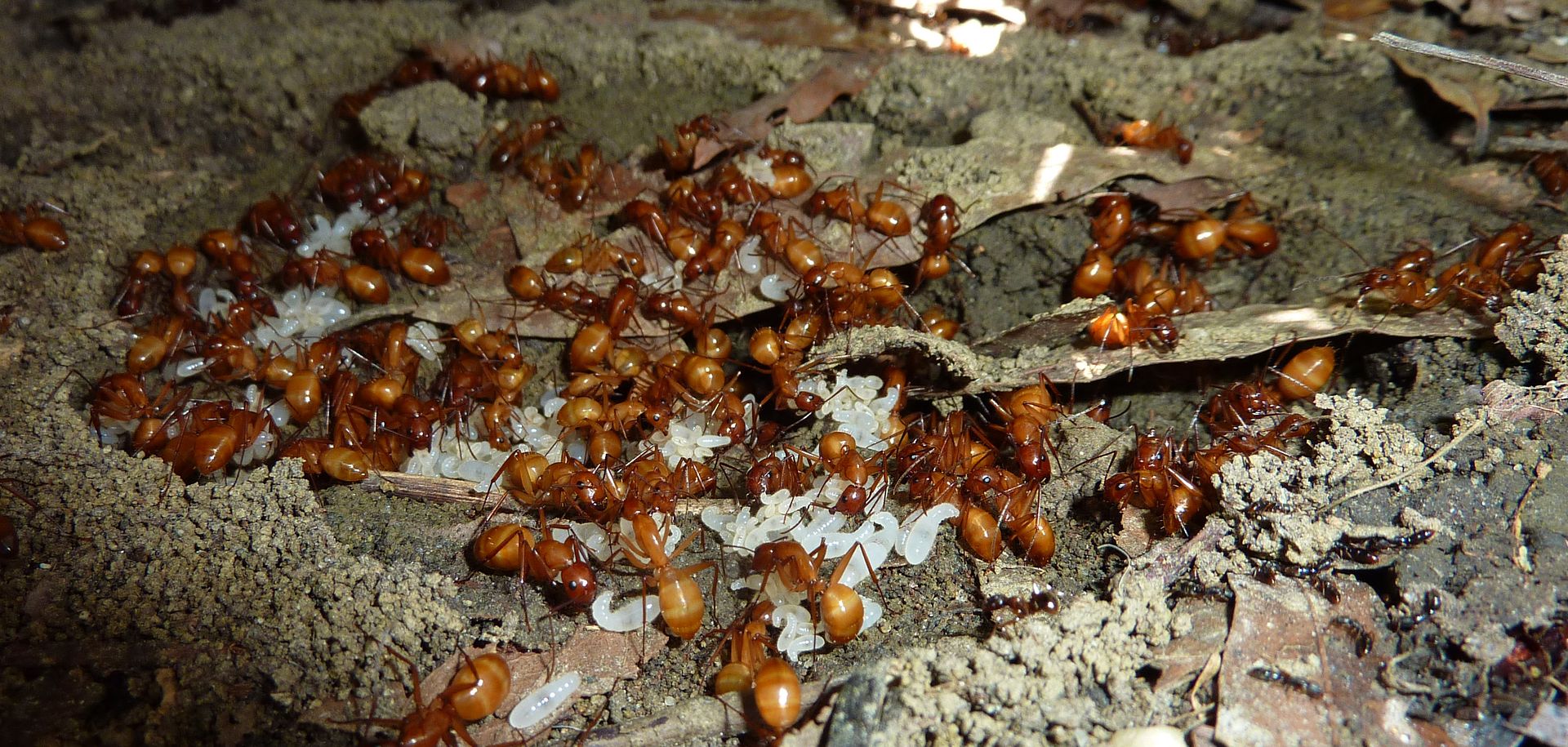I have a few Oak trees out in the yard, which tend to be prolific with caterpillars. Most of which are fairly bland looking and the one above is no exception. Caterpillars that don't have exotic colors to them or aren't covered in hairs, tendrils, or thorns, have to be cautious as they tend to be the easiest for birds to eat. We have several sparrows and robins nests about the yard so naturally their chances of survival are almost zero. So what these caterpillars have to do to escape being a meal is either hide or jump ship. I see droves of these lowering down from the tree each time a bird lands to inspect the tree. Ideally the caterpillar would lower onto another branch, but there's only so much tree to be had.
Once they're on the forest floor (or in this case my yard) they need to locate another host plant, typically a sapling or risk starvation. Some can survive by eating last years leaves that haven't decomposed but this isn't as nutritious for them.
Directly under the Oak Tree in question is a rather health colony of Camponotus castaneus. They tend to forage at night though, so until then other forest ant colonies have a chance to collect up some food. Located in the same area were colonies of Aphaenogaster rudis, Nylanderia faisonensis, Prenolepis imparis, and Tetramorium species E. (formerly T. caespitum), as well as a few young colonies Formica pallidefulva, and Formica incerta. All underneath one oak tree.
(There's also colonies of Lasius interjectus, and Ponera pennsylvanica too but I don't think they eat caterpillars too often. The Lasius colonies farm root aphids like there's no tomorrow, and the Ponera I expect to be predatory towards small mites and spring tails and such.)
So I fed this little caterpillar to my colony of Pheidole bicarinata, which is a rather tiny ant, commonly found in sandy areas. Pheidole is one of the most species rich genera in the world but here in NJ we're approaching their northern limits. They're far more prolific in tropical areas. They occur wherever there's lots of sandy soil and full sun to partial shade conditions. Colonies can get reasonably big, but for now this one fits nicely in a test tube. You can sort of make out the queen but she's out of focus and in the back towards the brood pile. The caterpillar tried to hide under their test tube but the ants soon found it and swarmed it.
Pheidole is a genus with a polymorphic worker caste. The smaller workers do most of the work while the larger ones are there mostly for food storage, milling seeds, and tearing open food items for the smaller workers to more easily get at. They can also block tunnel entrances with their heads when the colony is attacked.



